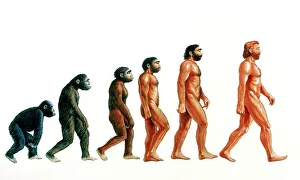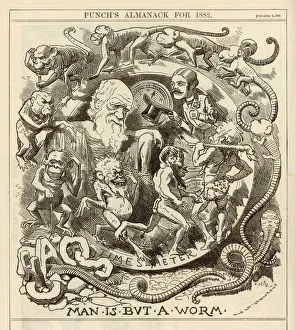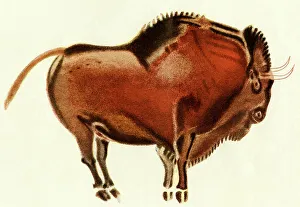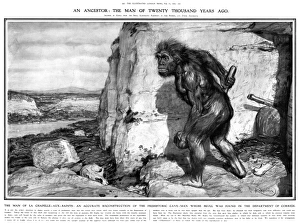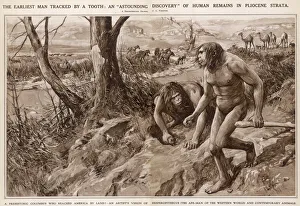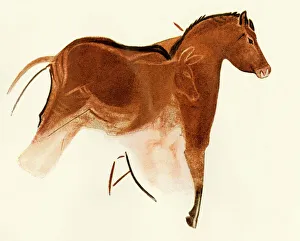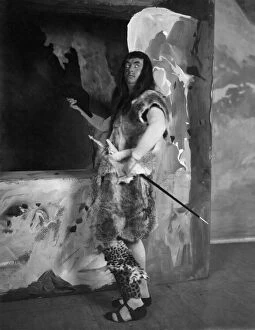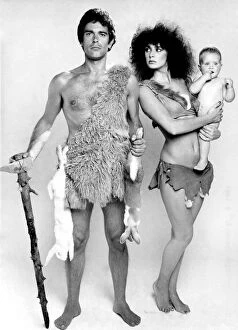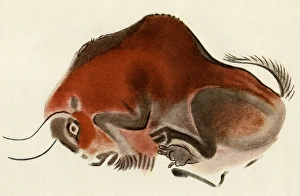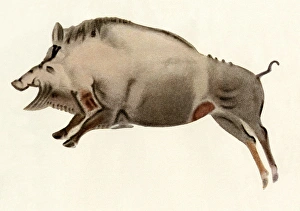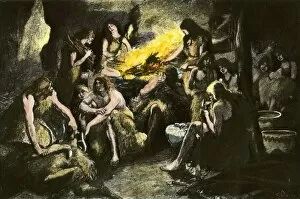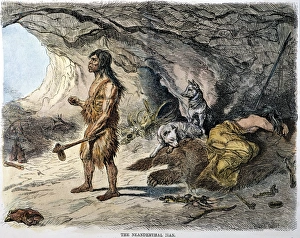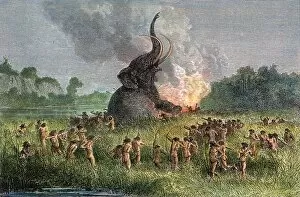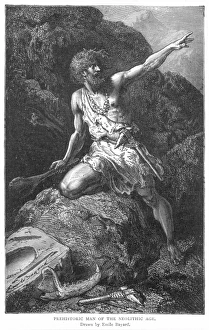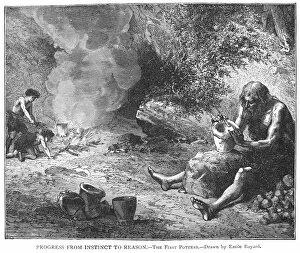Cave Man Collection
The concept of the "cave man" has long fascinated us, representing a crucial stage in human evolution
All Professionally Made to Order for Quick Shipping
The concept of the "cave man" has long fascinated us, representing a crucial stage in human evolution. Charles Darwin's groundbreaking theories shed light on our ancestors' progression from primitive beings to modern humans. In 1908, an extraordinary discovery was made in France - the first reconstruction of a Neanderthal man from the La Chapelle-aux-Saints skeleton. Frantisek Kupka and Marcellin Boule collaborated to create a drawing that captivated the world when published in The Illustrated London News. Prehistoric cave art provides glimpses into our ancient past, with stunning depictions like the bull found in Altamira, Spain. These masterpieces offer insights into early human culture and their connection with nature. One notable misstep occurred with Nebraska Man, where Amedee Forestier's illustration mistakenly portrayed an entire species based solely on one tooth fragment. This serves as a reminder of how important it is for scientific discoveries to be thoroughly examined and verified. Our prehistoric ancestors were skilled craftsmen, as depicted in wood engravings showing them making tools and weapons from flint. These artifacts demonstrate their resourcefulness and ingenuity during this era. Altamira also showcases another remarkable artwork: a depiction of a horse with its foal. Such images provide evidence of early humans' deep bond with animals and their ability to convey emotions through art. Various artistic interpretations have been made over time regarding cave men; lithographs like "Cave-Man" evoke curiosity about these primal beings who once roamed the Earth. Survival was paramount for our ancestors, as illustrated by scenes such as "The Mammoth Hunt. " This lithograph captures their bravery and determination while hunting these colossal creatures for sustenance thousands of years ago. A glimpse into daily life can be seen through works like "Primitive Man, " which portrays individuals engaged in everyday activities within their communities – highlighting social structures that existed even then.

